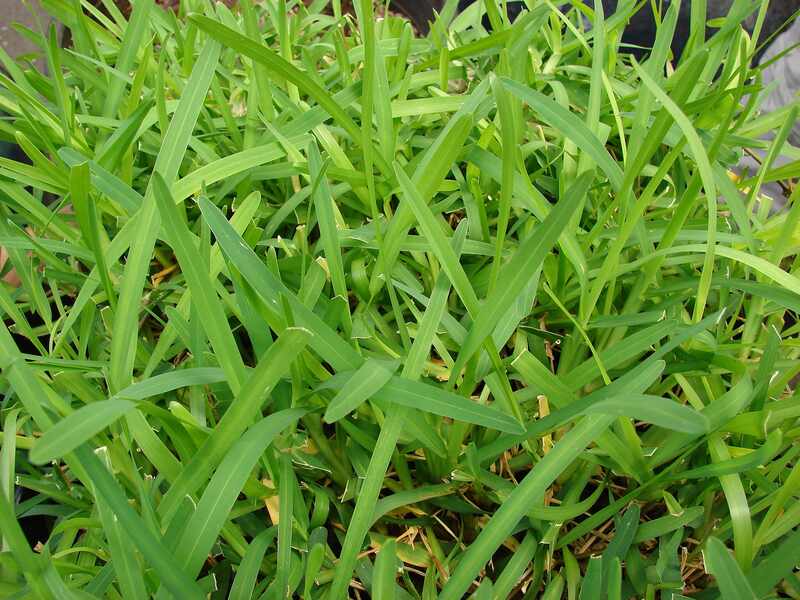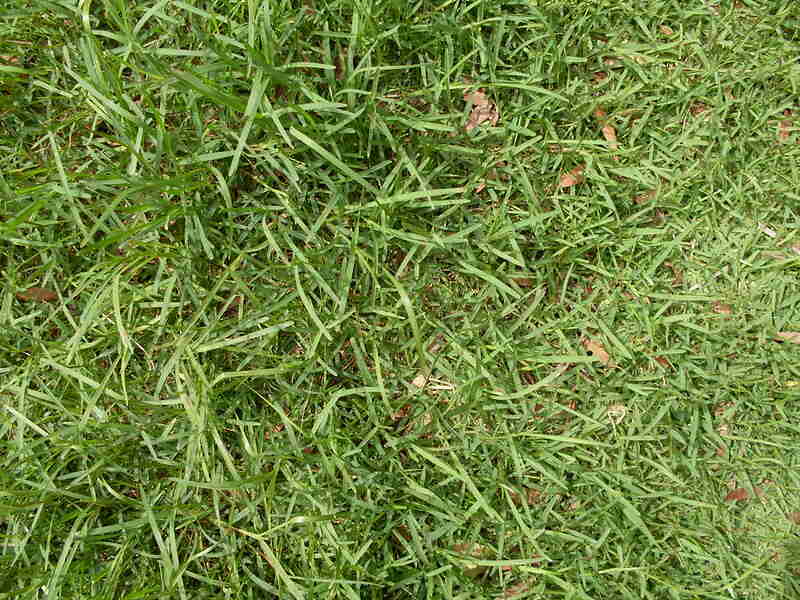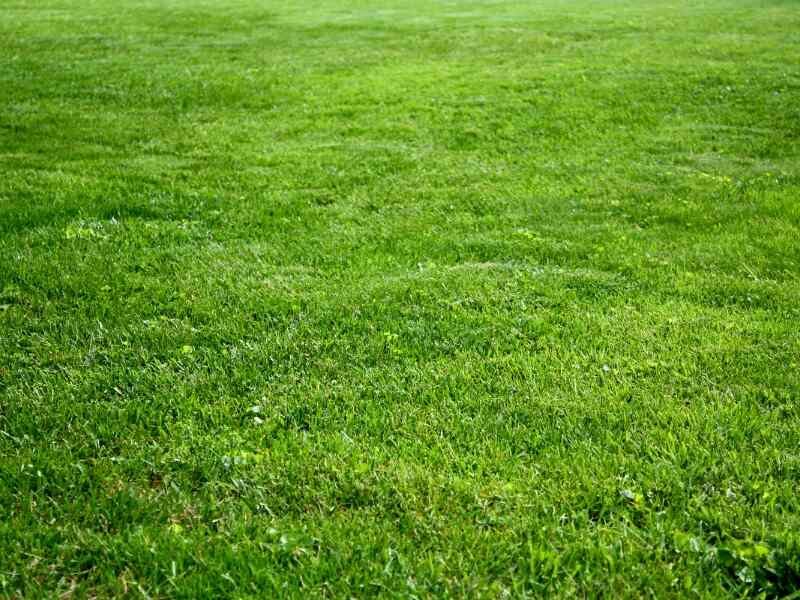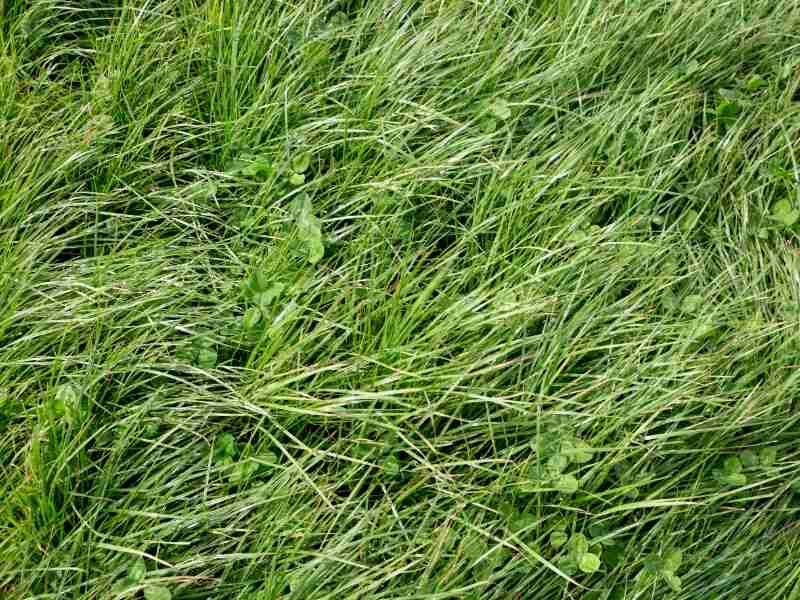Where your grass seed comes from isn’t one of the universe’s great mysteries. We’re not talking about how positronic traction works or why you shouldn’t wear white after Labor Day. It’s grass seed, and it has a history. In fact, every lawn and bag of grass seed has its own story to tell. Here are the origins of the most common grass species found in yards across the United States today.
Origin of Warm-Season Grasses
St. Augustinegrass (Stenotaphrum secundatum)

St. Augustinegrass is native to the West Indies, the Gulf of Mexico, and West Africa. It’s been used to build turf in Florida and along the Atlantic coast since about the 1890s. You also can find it in most Mediterranean and Caribbean areas.
That’s some well-traveled grass seed!
Grass Plug Options:
– Seed Ranch St Augustine Seville Grass Plugs (2 Trays)
– Seed Ranch St Augustine Floratam Grass Plugs (2 Trays)
Bermudagrass (Cynodon dactylon)

Native to Europe, Africa, Australia, and most of Asia, it’s thought that bermudagrass was brought over to the United States from Africa in the 18th century. Historians believe it may have snuck onto ships with contaminated hay used for slave bedding. It was recognized in the colonies as an excellent grass seed to handle heavy traffic – and in the days of horse and buggy, that was just as important as it is now!
Bermudagrass has been used in lawns and golf courses since the 1920s. It’s just a hardy type of grass.
Grass Seed Options:
– Pennington Bermudagrass Bare Spot (5 lb. bag)
– Pennington Smart Seed Bermudagrass Mix (8.75-lb. bag)
– Scotts Turf Builder Bermudagrass (10-lb. bag)
– Hancock Seed Co. Bermudagrass (50-lb. bag)
Bahiagrass (Paspalum notatum)

Native to South America, bahiagrass is widely found in Argentina, Brazil, Paraguay, and Uruguay. It came to the United States from Brazil in 1913 or 1914 (the date differs across extension pages) as a pasture grass for the Southeast. Additional varieties better suited for growing as turf were introduced in the following centuries.
Argentine and Pensacola are the two Bahia varieties commonly grown by homeowners as turf.
Grass Seed Options
Pensacola Bahiagrass:
– Scotts Turf Builder Pensacola Bahiagrass (5 lb. bag)
– SeedRanch Pensacola Bahiagrass Seed (10 lb. bag)
– Hancock Seed Co. Pensacola Bahiagrass Seed (50 lb. bag)
Argentine Bahiagrass:
– Scotts Turf Builder Argentine Bahiagrass (10 lb. bag)
Centipedegrass (Eremochloa ophiuroides)

Centipedegrass is commonly found in the Southeast from South Carolina to Florida and westward along the Gulf to Texas, but it started as an import from south China at the turn of the 20th century. In 1916, centipede seed was found in the baggage of USDA plant explorer Frank Meyer after he disappeared on his fourth trip to China.
All the centipedegrass found today in the US came from just three little sprigs of grass scientists grew on a farm.
Grass Seed Options:
– Gulf Kist Coated Centipedegrass Seeds (1 lb.)
– Scotts EZ Seed Patch and Repair Centipedegrass (3.75 lbs.)
– TifBlair Centipedegrass (5-lb. bag)
– Pennington Centipedegrass and Mulch (5-lb. bag)
Buffalograss (Bouteloua dactyloides)

Buffalograss is the only common turfgrass grown in the United States that doesn’t come from another country! This perennial grass is native to our own Great Plains, spanning from Montana to Mexico. Not surprisingly, it gets its name from its essential role in supporting the magnificent herds of buffalo that once roamed the plains.
While it isn’t as important to the buffalo anymore, it’s still essential to landscaping nationwide. It’s one of the rare turfgrasses that can handle all climates.
Grass Seed Options:
– Everwilde Farms Buffalograss Seeds (1 lb. of seeds)
– Buffalograss seed (primed) (5-lb. bag)
Zoysiagrass (Zoysia spp.)

Zoysiagrass was named after an 18th-century amateur Austrian botanist, Karl von Zois. It has grown as turf in Japan since at least the 12th century, so it has a lengthy history.
Zoysia japonica was brought to the US in 1895 from China’s Manchurian Province. Zoysia matrella came to the United States in 1911 from Manila by C. V. Piper, a USDA botanist. In the early 1950s, Zoysia types were released from the USDA and became available commercially for seed production.
Grass Plug and Seed Options:
– Zoysia Plugs (50 Large Grass Plugs)
– Zoysia Plugs (50 Full & Lush Grass Plugs)
– Zoysia Plugs (100 Plugs)
– Zoysia Emerald Grass Seeds (1/8 lb. of seeds)
– Zenith Zenith Grass Seeds (1/8 lb. of seeds)
Origin of Cool-Season Grasses
Kentucky bluegrass (Poa pratensis)

Bluegrass may conjure up thoughts of banjos, but this type of bluegrass has a different kind of groove. Native to most of Europe, North Asia, and the Moroccan and Algerian mountains, Kentucky bluegrass came with European settlers to the United States and followed them around as they settled in different parts of the country.
It’s called Kentucky bluegrass because Kentucky is where the seeds were first collected to be produced. Plus, the grass tips have a bluish hue in spring.
Grass Seed Options:
– Jonathan Green (11970) Blue Panther Kentucky Bluegrass Grass Seed (3 lbs.)
– SeedRanch Midnight Kentucky Bluegrass Seed (5 lbs.)
– Jacklin Seed – Biltmore Blue Blend – 100% Kentucky Bluegrass (5 lbs.)
Fine fescue (Festuca spp.)

Fine fescue grasses are from parts of Europe and Asia. Some have been used in Scotland since the 16th century for turf on golf courses (yes, they’ve played golf that long!). They can withstand pretty poor soil conditions, shade, and dry weather, making them hardy grasses to grow.
Any time you buy a “sun and shade” quality grass seed mix, you can be sure you’re getting fine fescue mixed with Kentucky bluegrass because it’s a winning combination that works in cool, humid climates.
Grass Seed Options:
– Outsidepride Legacy Fine Fescue Grass Seed (5 lbs.)
– Eretz Creeping Red Fine Fescue Seed (choose your size)
– Outsidepride Creeping Red Fine Fescue Grass Seed (25 lbs.)
– Outsidepride Hard Fine Fescue Grass Seed (10 lbs.)
Tall fescue (Festuca arundinacea)

Tall fescue is native to many parts of Europe (where it’s of little importance), the Mediterranean region, North Africa, and parts of Siberia, Central Asia, and the Middle East. It is believed it was brought from Europe in the 19th century as a contaminant in meadow fescue seed.
It’s become quite popular as a turfgrass because the grass seed grows in a myriad of conditions, from wet to dry soil and even soils lacking in nutrients.
Grass Seed Options:
– Triple-Play Tall Fescue Grass Seed Blend (5000 sq ft)
– Eretz Kentucky 31 K31 Tall Fescue Grass Seed (choose your size)
– Pennington The Rebels Tall Fescue Grass Seed Mix (7 lb.)
Perennial ryegrass (Lolium perenne)

Like many other cool-season turfgrasses, perennial ryegrass is native to much of Europe and Asia. It’s not exactly known when it was introduced to the United States; most sources simply say, “at an early date.”
Perennial ryegrass is another turf type grown across the country. It’s used as a permanent lawn in the country’s northern areas and across parts of the transition zone. Since it has such quick germination, it is also used as a temporary groundcover when seeding a new lawn in Kentucky bluegrass. In the South, it is the best grass to overseed lawns when they go dormant for the winter.
Grass Seed Options:
– Outsidepride Perennial Ryegrass Seed (5 lbs.)
– Eretz ProTurf Perennial Ryegrass Fine Lawn Seed (choose your size)
FAQ about where grass seed comes from
Are grass seeds harvested from grass plants?
Grass seed doesn’t come from the blades of grass directly. The typical lawn grasses — Kentucky bluegrass, perennial ryegrass, Zoysia, St. Augustine—all produce seedheads (or inflorescences) that drop seeds once they’re mature. In most cases, you cut the tops off your grass variety with the mower before the seedheads develop.
But not all types of seed will germinate and grow. Seed harvested from hybrid grasses is sterile and will never germinate to grow new grass.
What causes grass to go to seed?
Grasses go to seed for many different reasons. Ultimately, though, they send up seedheads in response to adverse growing conditions as a last-ditch effort to pass genetics to a new generation before the end of their life cycle. Common causes during the growing season are drought stress, hot summer temperatures, and weed pressure.
What is the difference between warm-season and cool-season grasses?
Warm-season turfgrasses prefer hot summer days and mild winters without snow; they grow mainly across the southern part of the United States. Cool-season grasses prefer cooler, more temperate summer conditions and can survive harsh winters; they grow mainly in the northern areas of the United States.
Honor your lawn’s history!
As you can see, your grass has come a long way to take up residence in your yard, so honor its heritage by caring for it well!
If you’re short on time or don’t want to get out and spend hours doing lawn care, reach out to Lawn Love! We’ll put you in touch with local lawn professionals who can handle mowing, fertilization, and weed control to give you a beautiful, healthy lawn!
Lawn Love participates in the Amazon Services LLC Associates Program, an affiliate advertising program. Lawn Love may earn revenue from products promoted in this article.
Main Image Credit: Elena Photo / Canva Pro / License